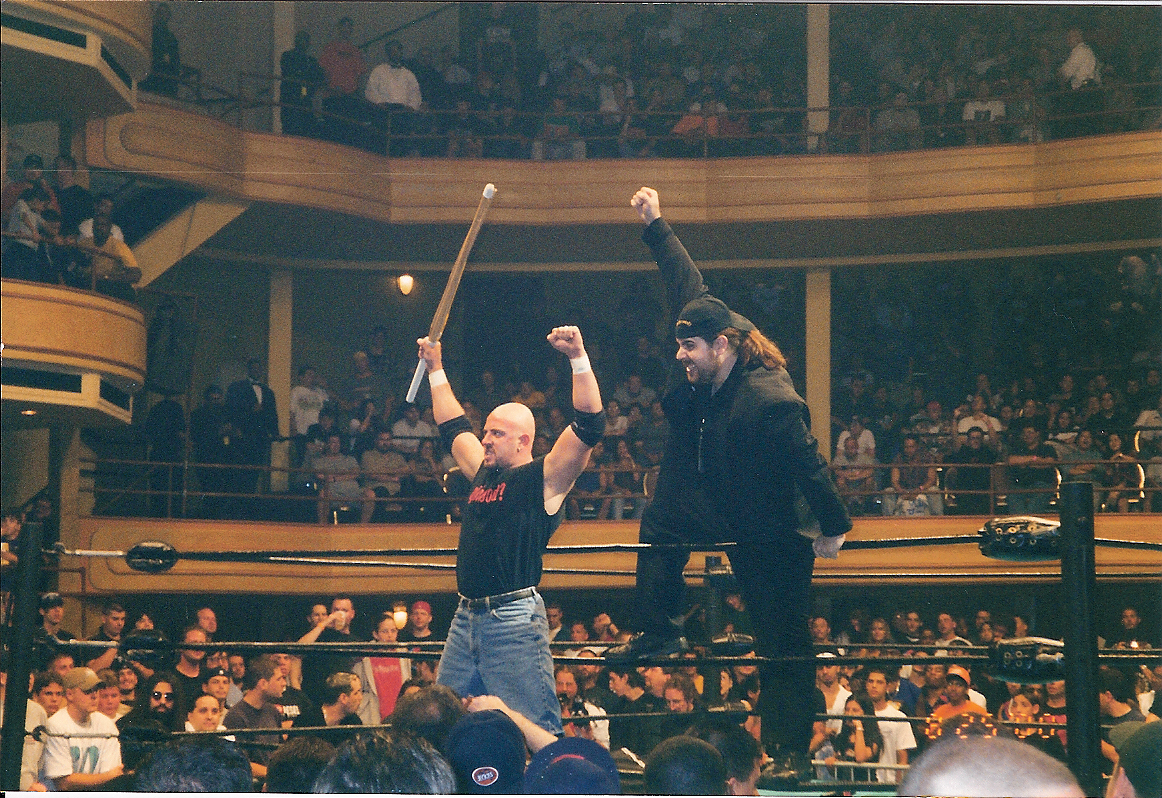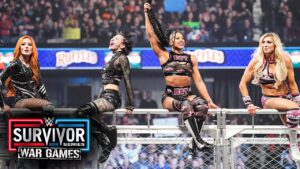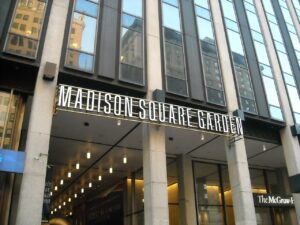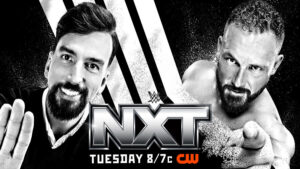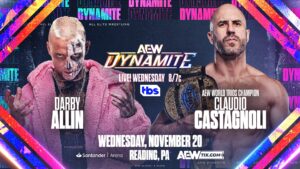As discussed with the previous article covering some of wrestling’s greatest venues, the relationship between a space and wrestling fans becomes reinforced with repetition. Wrestling is a form of community, both for the fans and the performers.
The fans become regular visitors, filling the same seats over and over seeking entertainment. The performers become familiar with these crowds, their showings becoming more fine tuned to fit what spectators are looking for.
Generations are bridged by families visiting these events and a special relationship is tendered with the artform. The space, participants, viewers – all of these components create a magical energy for a wrestling show.
These elements make moments special, watching villains get one over their rivals time and time again only to get toppled by the revered hero. As angles unfold, these moments become part of wrestling lore and the halls they take place in become immortalized.
With that out of the way, here are a few more iconic venues of professional wrestling.
Cow Palace
Located in California’s Daly City, the Cow Palace gained prominence for its use as a boxing venue and home of the San Francisco Warriors basketball team. Roy Shire ran Big Time Wrestling, an NWA affiliate with the Palace as its home base.
Touring the southwest, stars such as Pat Patterson, Rocky Johnson, and Peter Maivia earned prominence thanks to the territory’s popularity and television exposure.
Grown weary of the industry from conflicts with Verne Gagne and Vince McMahon Sr., Shire spoke to the Sacramento Bee where he exposed the inner workings of the business to the press. The company would shutter its doors in 1981.
When visiting the San Francisco Bay Area, the WWE would hold house shows at the arena. On the “Six Feet Under” podcast, the Undertaker reminisced about his “bittersweet relationship” with the Cow Palace.
Working against any of the Samoan talent, Undertaker was pigeonholed by the audience into being the heel with the crowd trickling shouts of “Talofa Samoa!” He also mentioned rowdy fans who would throw debris into the ring, saying you’d have to “have your head on a swivel.”
In February 2004, WWE hosted No Way Out from the Cow Palace. Headlining the card was WWE Champion Brock Lesnar defending against Eddie Guerrero, looking to pay off years of hard work and redemption.
With an assist from Goldberg and the title belt, Guerrero pinned Lesnar to win his first world championship in a near two decade career. As the show faded to black, an ecstatic Eddie is seen celebrating as his family watches on misty-eyed.
In 2018 amidst its western conquest, New Japan hosted the G1 Special in San Francisco. In the semi-main event, Juice Robinson took on Jay White for the IWGP United States Heavyweight Championship. Sitting ringside for English broadcast commentary were Jim Ross and Josh Barnett.
White delivered a suplex to Robinson on the barricade, dominoing onto the announcer’s table and causing Ross to hit the ground.
Barnett, a shootfighter with notoriety on both sides of the Pacific, was legitimately heated and stared down White before crossing the barricade. Hijacking the match while medics tended to JR, Barnett stood in the ring and cursed on camera before reassuming his duties for the evening.
Robinson would win the match for his first of three US Championship reigns.
Ross would go on his “Grilling JR” podcast recounting the incident, where he suffered a broken rib. He described the great effort of finishing the broadcast while struggling to keep his breath. The injury would see Ross cancel commitments later in the week due to pain.
In a “Talk is Jericho” appearance, White laid the scene out of working the match to keeping distance from a legitimately pissed Barnett (h/t Fightful). Once he reached backstage, both him and Robinson were chewed out by the broadcast team and AXS officials.
On top of injuring one of the most enduring figures of the scene, he nearly compromised the broadcast as there were wires near the fence. In White’s defense, he claims he wasn’t told about guard rail spots being off limits.
In March 2023, AEW visited the Palace for the first time. Leading into that weekend’s pay-per-view, Powerhouse Hobbs won the Face of the Revolution Ladder match for a shot at the TNT Championship.
Daily’s Place
Thanks to the Khan family’s ownership in the Jacksonville Jaguars, AEW has managed to plant itself firmly in the city. A part of what is now known as EverBank Stadium, formerly TIAA Bank Field, Daily’s Place is an amphitheater on the premises used for concerts and AEW television broadcasts.
Beginning its annual Homecoming tradition on New Year’s Day 2020, Cody Rhodes went over Darby Allin after their last encounter ended in a draw. The Elite stood tall in a trios main event versus Death Triangle.
Government mandates during March 2020 saw crowds fizzle from the stands as wrestling shows were taped behind closed doors. In the organization’s first Pandemic-era broadcast, Cody Rhodes opened with a candid promo reflecting the state of the world.
Following months of speculation, the Dark Order revealed their leader to be “The Exalted One” Brodie Lee. Flanked by Evil Uno and Stu Grayson, Lee beat down SoCal Uncensored to put the roster on notice.
The debut had been intended for his hometown of Rochester, with Lee describing it as “serendipitous… too perfect,” to have happened in an interview with ESPN.
Later in the night, the Elite faced the Inner Circle in a trios contest for the advantage in their upcoming Blood and Guts match. The Inner Circle would win, with Chris Jericho reveling in their success. Since Nick Jackson was out of action with an injury, the Elite enlisted the aid of a debuting Matt Hardy.
As restrictions loosened fans were admitted into the stands in limited seating. Looking to differentiate itself from WWE’s product at the time, AEW used members of the roster to fill out the ringside area.
The Daily’s Place era saw crucial moments in the company’s lore as it was within their first year of operation. Debuts for FTR and Sting are among the most prominent of this time. Cody’s TNT Open Challenge helped give a platform for unsigned, independent talent such as Warhorse, Eddie Kingston, and Ricky Starks.
Kingston and Starks would be signed with the promotion following their performances. AEW’s residency in Jacksonville continued until July 2021 when they returned to the road.
Similar to the ThunderDome, Daily’s Place is synonymous with a moment in time for the world. Uncertainty permeated throughout society and that was reflected in live entertainment.
In an interview with UPI, Tony Khan reflected on this time saying the company had an MO of “let’s create the experience of a drive-in movie.” He looked to create an alternative experience to the ThunderDome, employing live fans rather than walls of facecams.
Although having returned to a touring schedule, AEW continues to host shows from the amphitheater. Following his return at Dynasty in April 2024, Jack Perry confronted Tony Khan following his post-All In suspension.
Perry gut checked Khan with a microphone, the first time the company’s founder was involved physically in an angle. The Bucks hit Khan with a Meltzer Driver, prompting the referees to arrive to check on Khan. The officials tended to him while billionaire Shahid Khan, Tony’s father, looked on in concern as the show concluded.
Manhattan Center
Positioned on West 34th Street between 8th and 9th Avenue, the Manhattan Center was opened in 1906 by impresario Oscar Hammerstein I. Originally the Manhattan Opera House, the space was rebranded and its Grand Ballroom is now used as a multipurpose space.
The WWF filmed its first episode of Monday Night Raw in the Ballroom in January 1993. A noteworthy angle of the show was Bobby Heenan’s pursuit for entry despite tickets being sold out. Once he was able to make it inside, the event had already concluded.
NWA affiliate the World Wrestling Network held their only taping in February 1994 at the Center, following a successful show in Texas the previous summer. Jim Crockett Jr. aligned with Paul Heyman after selling his family’s namesake promotion to Ted Turner.
The WWN hoped to pioneer high definition production with Internet broadcast, which was unheard of then (h/t Ring the Damn Bell).
The sixteen match card featured stars formerly of both major US promotions, as well as ECW talent given Heyman’s role with that company. Notable participants include Jake Roberts, Bob Orton Jr., and The Public Enemy. Sabu and Terry Funk main evented the show in a double-disqualification finish.
The WWF returned to the Manhattan Center in February 1997, with Jerry Lawler antagonizing ECW from the commentary booth. Following an introductory match, The Eliminators jumped the barricade to hit Total Elimination on a member of the ring crew.
The crowd was receptive to the appearance of the ECW World Tag Team Champions, reflected in their chants and merchandise seen on camera. Alongside WWF talent, ECW stars such as Taz and Tommy Dreamer were showcased as a part of the under-the-table working agreement between the two promotions.
In 2002, MLW Reload took place featuring ex-ECW talent as well as rising stars in the American indies and Japan. Headlining the card was Satoshi Kojima, winning his first world championship against Jerry Lynn.
Ring of Honor’s first show at the Manhattan Center was 2006’s Final Battle, seeing Homicide win the World Championship off Bryan Danielson in a hometown victory. They’d return for occasional events in the Grand Ballroom until 2013.
In September 2008, TNA visited the Manhattan Center for the first time with a house show. In 2014 and 2015, they’d return throughout the year for television tapings as well as pay-per-views such as Destination X, Hardcore Justice, and No Surrender.
As part of Monday Night Raw’s twenty-five year anniversary, WWE hosted a special broadcast from both the Grand Ballroom and Barclays Center. In segments held from Barclays, fans in the Ballroom watched on screens with the occasional live promo and match interweaved.
Fans chanted for refunds, paying a premium for live seats to essentially watch Raw on a screen.
A pair of cruiserweight dark matches, a blunderous Bray Wyatt vs. Matt Hardy encounter, and a tag team main event which looked to embarrass The Revival failed to do the history of the brand justice. Deadspin described hardcore fans being “shafted” as the company exploited their nostalgia.
Hammerstein Ballroom
Housed within the Manhattan Center as a concert hall, the Hammerstein Ballroom has seen many uses for pro wrestling over the years.
ECW started running shows out of Hammerstein in August 2000, for both weekly television and December’s Massacre On 34th Street. 2001’s Guilty as Charged at the Ballroom would be the final pay-per-view of the promotion’s original run, closing out with Rob Van Dam winning against Jerry Lynn.
In July 2005, WWE held One Night Stand under the ECW banner. The reunion card featured ex-ECW talent and a cabal of loyalist WWE “Crusaders” watching from a skybox. Paul Heyman cut a vitriolic opening promo, calling out Eric Bischoff, Edge, and JBL among others.
The main event saw the Dudley Boyz, donned in tie-dye, face Tommy Dreamer and The Sandman. In particular, the Sandman received a hero’s welcome, entering to Metallica’s “Enter Sandman” he navigated a sea of fans armed with a Singapore cane while soaked in beer.
Concluding the show, these Crusaders brawled with the native ECW talent, including Tazz who choked out Kurt Angle. In the midst of the brawl, JBL legitimately roughed up the Blue Meanie, leaving him bloodied.
The following One Night Stand would see the company return to the Ballroom, kickstarting a rebooted version of ECW. The evening’s card included World Champion Rey Mysterio facing Sabu in a polarizing no-contest finish.
Closing the night out, John Cena defended the WWE Championship against Rob Van Dam. The crowd openly antagonized Cena, who epitomized all they rejected about the contemporary WWE product.
This included a banner warning “If Cena Wins, We Riot” and desecrating his t-shirt when he threw it in the crowd. A motorcycle-helmet clad Edge interfered, spearing Cena through a table to help Van Dam win the WWE Championship with a Five Star Frog Splash.
In reflecting on the match, Cena described the “enthusiastic” audience as “the best crowd” he ever performed in front of during WWE 2K23’s Showcase Mode.
WWE’s ECW held an August 2006 taping from Hammerstein. This episode saw the debut of indy darling CM Punk, following a prominent independent career and a run in Ohio Valley Wrestling. The critically-panned main event saw SmackDown star Batista defeat ECW Champion The Big Show via DQ.
Throughout the 00’s, Ring of Honor visited Hammerstein starting with 2008’s A New Level. The company has held numerous anniversary shows, Death Before Dishonor, and Final Battle events.
Along with 2014 and 2017’s ROH/NJPW War of the Worlds shows, New Japan also promoted Fighting Spirit Unleashed in September 2019.
The Urban Wrestling Federation in 2011 looked to jumpstart itself by hosting tapings at Hammerstein. The promotion was an intersection of wrestling and rap, taking elements of gritty crime dramas such as The Wire. In a way, it opened the door for Lucha Underground and cinematic filmmaking techniques utilized a decade later in the Pandemic.
The Wrld On GCW in January 2022 was held in the Ballroom as a milestone moment for the promotion, breaking attendance records in the process.
In November 2024, Andrew Zarian reported that ROH is expected to hold December’s Final Battle at Hammerstein, followed by AEW Collision the next day.
Game Changer Wrestling will make their return to Hammerstein in January 2025, where they will hold The People vs. GCW.
More From LWOS Pro Wrestling
Header photo – WikiMedia Creative Commons – Stay tuned to the Last Word on Pro Wrestling for more on this and other stories from around the world of wrestling, as they develop. You can always count on LWOPW to be on top of the major news in the wrestling world, as well as to provide you with analysis, previews, videos, interviews, and editorials on the wrestling world.


